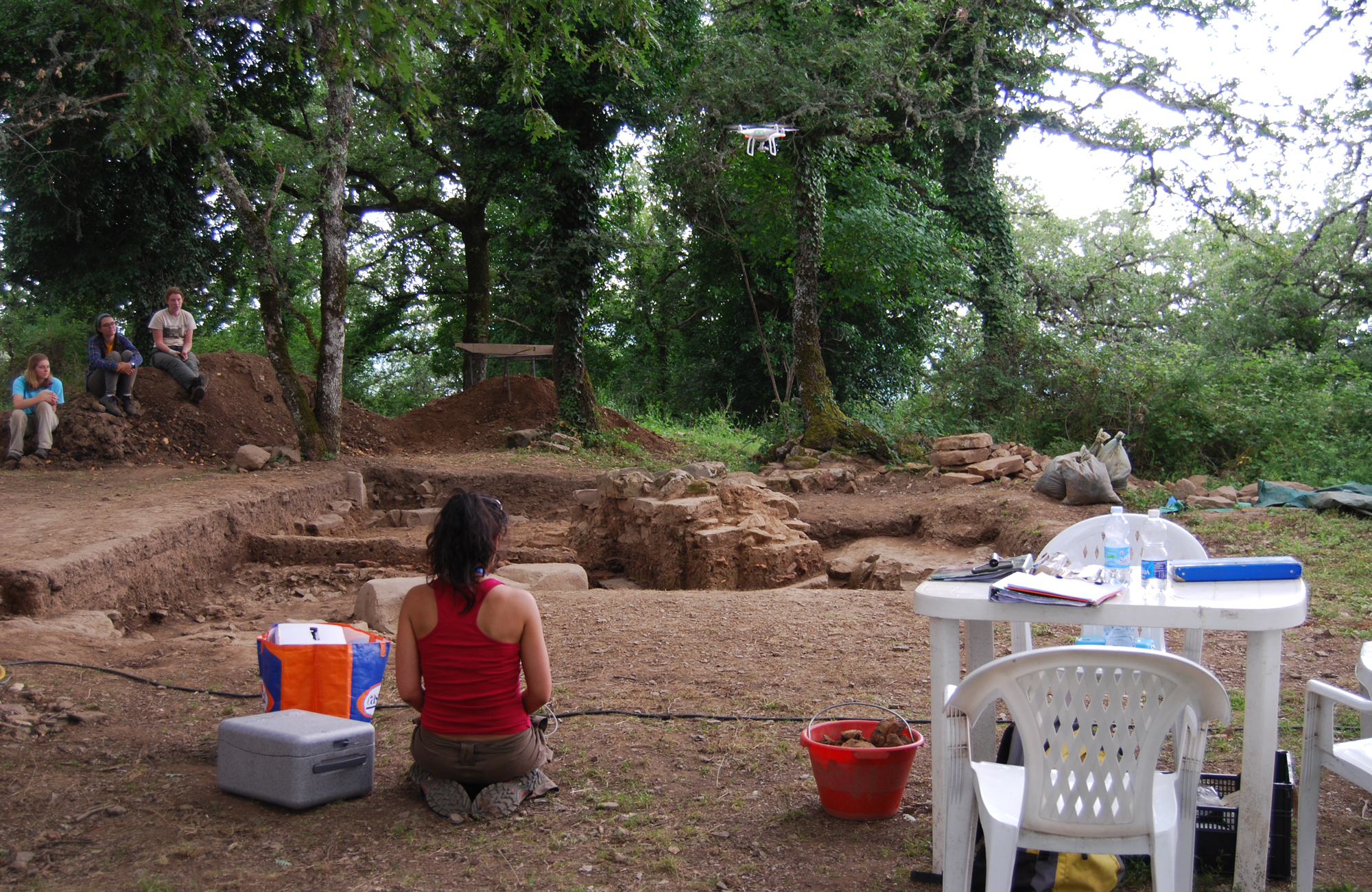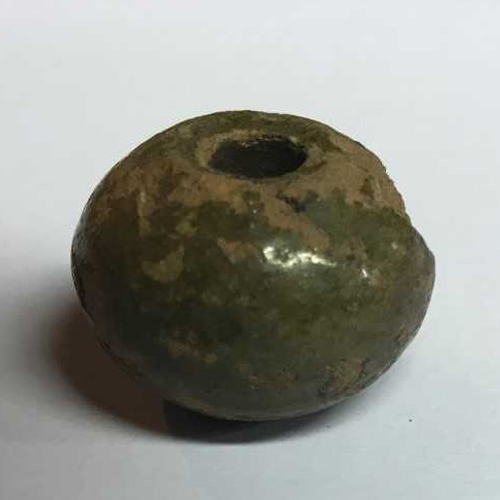With classics professor’s help, a medieval castle returns to light in Tuscan countryside
Since 1973, the Department of Classics at Florida State University has been excavating the archaeological site of Cetamura in the Chianti region of Tuscany, Italy. Hundreds of students, both graduate and undergraduate, have received training in field archaeology as they uncovered the ancient remains of Etruscan, Roman and medieval civilizations dating back some 26 centuries.

Professor of Classics
Led by Nancy de Grummond, FSU’s M. Lynette Thompson Professor of Classics, recent digs at Cetamura have provided stunning new glimpses of the site’s rich history — the remains of a castle dating back to the 12thcentury A.D.
“Evidence gathered from carbon 14 dating at Cetamura means that we can now identify with certainty the stone foundations of a noble medieval residence at the site,” de Grummond said. “The latest discoveries provide the basis for connecting an intriguing mix of archaeological remains, historical documents and scientific analysis. The residence is mentioned in 12th-century documents of the nearby monastery of the Badia a Coltibuono, where it is called a castrum, a word that normally means “castle” in medieval Latin. The property belonged to the powerful noble clan of the Firidolfi.”
Charred timber excavated next to the stone foundation walls, located on the highest zone of Cetamura, has been dated by the laboratory of Beta Analytics in London as most likely falling between 1033 and 1190 A.D. The excavations of the timber in June 2017 were part of an ongoing project of FSU’s International Programs, under the direction of de Grummond and with the collaboration of Cheryl Sowder of Jacksonville University, Laurel Taylor and Lora Holland of the University of North Carolina, Asheville, and Charles Ewell of New York University and Syracuse University in Florence, Italy.
“Judging from historical documents, the higher end of the carbon 14 dating is most relevant,” de Grummond said. “Possibly the buildings of the castrum were leveled to the foundations by an attack of Florentines in 1198 A.D., who at the same time occupied a castle nearby at Montegrossoli. Both of these were property of the Firidolfi, or, as they are called in Latin, the Filii Rodulfi, ‘the sons of Rodolfus.’ (The founder of the family Rodolfus probably lived in the 8thcentury A.D.) The Florentines had good reason to attack the Firidolfi after they had assaulted a train of 50 mules carrying grain to relieve a famine in Florence. The Firidolfi fled the area at this time.”
The backdrop for the story, de Grummond explained, is the medieval struggle between the parties of the Ghibellines, supporters of the Holy Roman Emperor Frederick Barbarossa (1122-1190 A.D.), and the Guelphs, supporters of the Church and the free communal towns. The Firidolfi were Ghibelline, hence the enemies of Florence, dominated by the Guelphs at the time. The monastery, too, would have sympathized with the Guelphs.
Documents of the Badia dating between 1172 and 1177 show that the monks claimed that they were being abused and assaulted by the Firidolfi, and gave the names of some seven men accused of causing problems for the monastery. The documents contain an injunction against them, warning them not to stay at the monastery at night but to return to their nearby residences at Montegrossoli and Cetamura (called Civitamura in Latin). The long list of violence and injuries alleges that they had been beating the clerics, pulling off the beard of one and punching and kicking another and even using a sword. They are said to have been stealing lands and livestock, destroying mills and vineyards, killing chickens and taking cheese and eggs to feed to their dogs. The injunction also forbids them to take away any “mule or cow or pig or sheep or goat or any other quadruped.”
“Some members of the Firidolfi family, then, were living at Cetamura (Civitamura) in the second half of the 12thcentury,” de Grummond said. “So far, mainly the foundations of their buildings have been found, in trenches supervised by Cheryl Sowder and staffed by FSU classics students Samuel Johnson and Julian Schultz. The thick walls were made of irregular sandstone slabs and rubble. Before the carbon 14 analysis dates were known, it was not possible to connect the walls with the Firidolfi. Now the walls and many artifacts found in association with them can be integrated into the picture, in particular a type of ceramic pan used to make hearth bread or focaccia.
“In and around the same room with the charred timber were found numerous sherds of these pans, as well as animal bones, an iron knife and fragments of a combed ceramic ware used for pitchers for water or wine,” she said. “Schultz also found a flint stone used for lighting fires. It is hypothesized that this was an area used in the 12thcentury for cooking and dining. A dumping episode in a deep well north of the building contained broken focaccia pans as well as bones of cow, pig and sheep or goat. Now all of this may be dated to the twelfth century.”
Several other areas of the site of Cetamura have been interpreted in the past as part of the castrum mentioned in the document. A stone fortification wall 2 meters thick has been found on the north side of the high zone, adjoining an area that was probably a monumental gate. A number of very large squared stones scattered here could have been part of this gate or more likely a tower torn down by the Florentines. Other walls of varying thickness elsewhere on the zone can be integrated into the plan of fortification, and post pits relate to what was probably an open courtyard with a portico and small rooms where animals could be kept.
Was Civitamura really a castle? According to de Grummond, it is certain that Montegrossoli was, and still standing there are parts of an impressive tower, albeit from a rebuilding after the time frame discussed here. Seemingly the residence at Civitamura was not rebuilt, but must have been completely abandoned by the Firidolfi at the time.
“There are still rather extensive unexcavated parts of the high zone adjacent to the area of the burnt timber,” de Grummond said. “It should be possible to locate more of the residence and learn more about this fascinating period in the medieval Chianti countryside.”

View of foundations of the ground floor of one room of the Medieval castle at Cetamura (called Civitamura in Medieval documents)

Remains of a hearth in the cooking area. Carbon from this area led to the dating of the castle to the 11th and 12th centuries.

3-D reconstruction of a Medieval pan from Cetamura for making hearth bread

FSU students watch as drone photography is carried out by Italian expert Lisa Afeltra. The small white drone is visible in the upper part of the center of the photo.

Drone photography of some of the remains of walls and possible paving from the castle

Glazed spindle whorl indicating the presence of women at work spinning at Medieval Cetamura
 Iron knife found near the hearth
Iron knife found near the hearth
